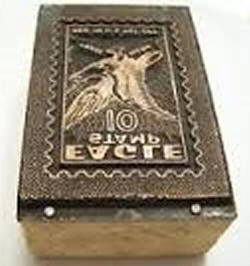| A B C D E F G H I J K L M N O P Q R S T U V W X Y Z |
Baby Zepp (Baby Zeppelin)
A nick name for the US 1933 50¢ Century of Progress air mail stamp, which portrays the Graf Zeppelin over the Atlantic Ocean with the Federal Building in Chicago at left and the hangar at Friedrichshafen.

Back-of-the Book (BOB)
Stamps listed after the regular issues and commemorative stamps; ususually issues like air mail, postage dues, revenue stamps.

Backstamp
A postmark applied to mail by the receiving post office or by a post office handling the piece while it is in transit. Backstamps are usually on the back of a cover but they can also be on the front.
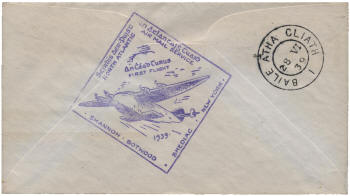
Bakers U.S. Classics
A compilation of weekly columns written for the "Stamps" magazine by Hugh and David Baker. The columns discuss all phases of U.S. classic material from stampless covers and rare U.S. stamps, 1845-1869, to foreign mails, with a smattering of data on the Civil War and the Confederates.
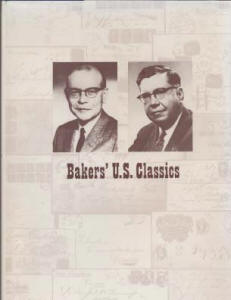
Bank mixture
A high quality mixture of stamps. It traditionally represented clippings from the mail of banks or other businesses with extensive overseas correspondence, and thus includes a relatively high proportion of foreign stamps of high face value.

Bank Notes
The nickname for the US stamps of 1870-1894 produced by the National Bank Note, Continental Bank Note, and American Bank Note Companies. The "large" Banknotes are listed as US 134-218 and the "Baby" Banknotes as US 219-229.

Bantams
The nickname of the South African definitive series of 1942-43. Wartime economy measures prompted the manufacture of stamps of a smaller size to conserve paper.
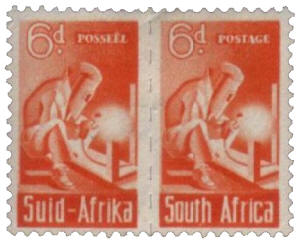
Barr-Fyke Machine Cancellation
The Barr-Fyke Machine Company of Kansas City, Missouri provided US postal cancellation machines from about 1897 to 1905. The Barr-Fyke cancels are distinctive, and some bring a nice premium.
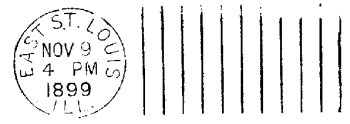
Batonne
A woven or laid paper with watermarklike lines deliberately added in the papermaking process and intended as a guide for handwriting.
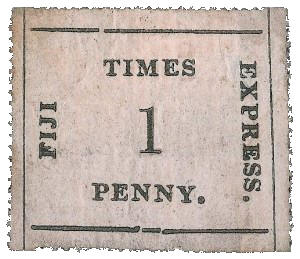
BEP
Acronym for the US "Bureau of Engraving & Printing". The Bureau of Engraving and Printing took over the printing of U.S. postage stamps in 1894.
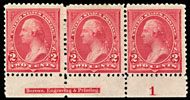
BIA
An acronym for the "Bureau Issues Association" , an association of collectors to promote the study of the philatelic production of the Bureau of Engraving and Printing and of postage and revenue stamped paper produced by others for use in the United States and U.S. administered areas.
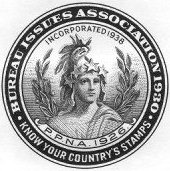
Bi-color
A stamp printed in two colors.
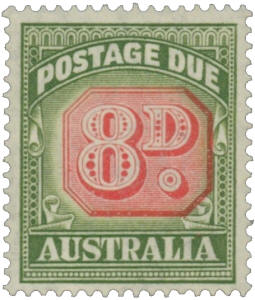
Bisect
A half of a stamp which has been cut in two, usually by scissors or knife, to cover the postage of half the original face value. Bisects are commonly found with diagonal cuts and horizontal cuts, but occasionally with vertical cuts as well. Bisects were most often used to fill temporary shortages of the required denomination. Since a bisect genuinely used for postage often brings many times the value of the intact stamp, bisects are usually collected with the stamp tied by cancel to the original cover.
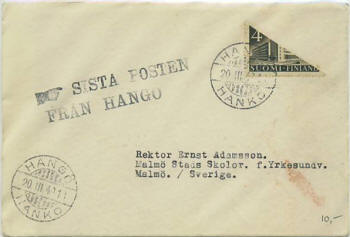
Bishop mark
The name used for the earliest postmark; introduced by Henry Bishop in England circa 1661. A Bishop mark was used to indicate the month and day that a letter was received by a post office encouraging prompt delivery by letter carriers.
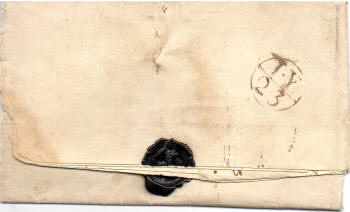
Black Hardings
US commemorative/memorial stamps issued in 1923 to mourn the death of President Harding. Although, these stamps may look like the definitives of the era, they are not, they are commemorative stamps.
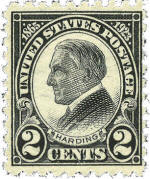
Black Jack
The nickname for the black US two cent Andrew Jackson stamps and envelopes first issued in 1863.

Blind Perforations
An impression made by perforating pins in a place where perforations were intended, but from which the chads were not removed leaving the impression that no perf hole is present. These interesting varieties are not to be confused with imperforate stamps. Blind perforations are considered freaks, not errors, and carry little, if any, premium over normally perforated copies.
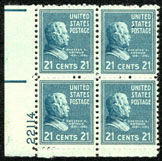
Boardwalk Margins
An impression made by perforating pins in a place where perforations were intended, but from which the chads were not removed leaving the impression that no perf hole is present. These interesting varieties are not to be confused with imperforate stamps. Blind perforations are considered freaks, not errors, and carry little, if any, premium over normally perforated copies.
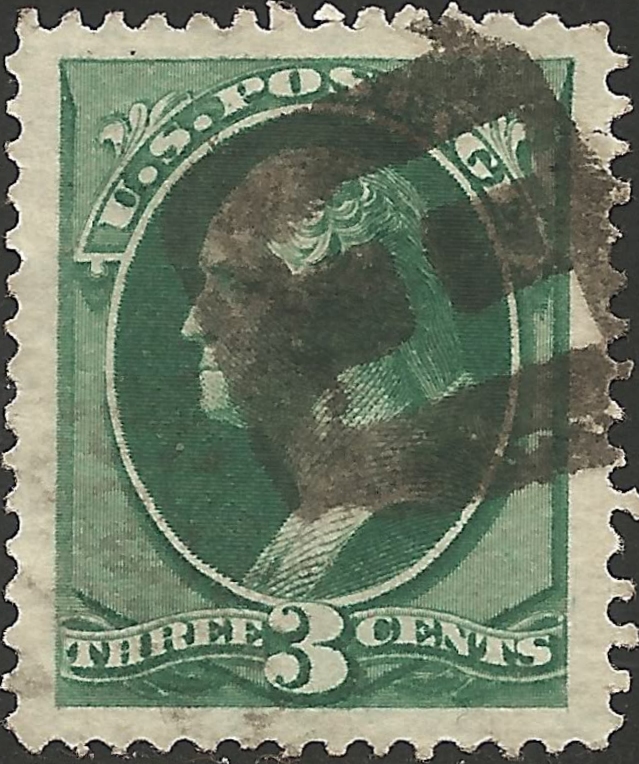
Bourse
A meeting of stamp collectors and/or dealers where stamps and covers are sold or exchanged. A bourse usually has no competitive exhibits of stamps or covers.

Block
A multiple of stamps, generally four or more in number. A block may contain any number of stamps greater than four and need not be regular. For example a block of seven may have two rows of three stamps and one row of one stamp. It is questionable to break apart a block of stamps before about 1930 with the purpose of increasing the resale value of the lot, because it is destroying a piece of philatelic history. Blocks of stamps printed before about 1935 are becoming increasingly scarce, especially better centered blocks since the single well-centered stamps bring a premium.

Bluenose
The nickname for Canada Scott 158; the 50 cent issue of 1929 which pictured the schooner ship Bluenose.
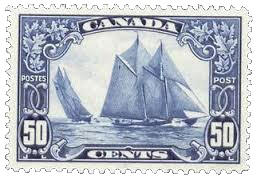
Bluish Papers
A nickname for the US Washington Franklin stamps of 1909 with paper containing a high 35% rag content. The "blue papers" were an attempt to reduce the shrinkage when the paper dried after printing and thereby reduce waste, since the irregularly shrunken sheets did not perforate properly. The result of the "blue paper" experiment was deemed unsatisfactory, and was dropped that year. The color of the paper is not "blue" it is more of a "grayish" hue.

Booklet (Stamps)
One or more panes of stamps, sold by the post office, often in vending machines, usually with card covers and held together by staples, thread or glue. The booklet may be collected as an entire unit or by the pane.

Booklet Pane
Any of a number of panes or small pages of postage stamps, originally stapled together into a booklet for the convenience of users.
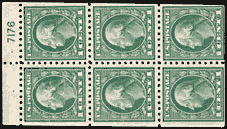
Brazer, Clarence W.
Widely regarded as one of the great American philatelists, his book "Essays for U.S. Adhesive Postage Stamps" is considered essential reading for any serious student of U.S. stamps.
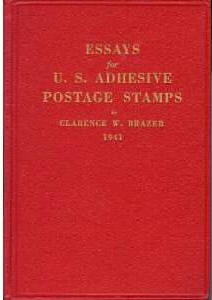
Brinkerhoff Perforations
Perforations privately applied to imperforate flat plate postage stamps by The Brinkerhoff Company for use in its vending machines.

Broken Hat
The nickname for a plate variety on the US two cent Columbian stamp of 1893, US 231, in which the third figure standing to the left of Columbus has a noticeable gap in his hat.

Brookman
A U.S. & Canadian Philatelic Price Guide and alternative to the Scott catalog; notable for the alternative numbering system in which commemorative and definitive issues are given individualized numbering systems.
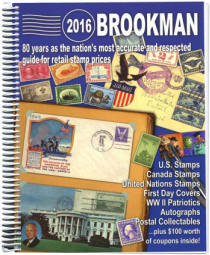
Brookman, Lester
Widely regarded as one of the great American philatelists, his books on 19th Century U.S. stamps are considered essential reading and reference for any serious student of U.S. stamps.
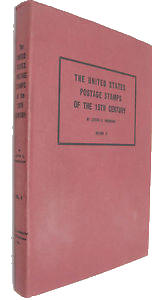
Bulls-eye Cancel
Often called "socked-on-the-nose". A postmark that is struck directly or nearly directly on the center of the stamp. The cancel should be clean and legible.
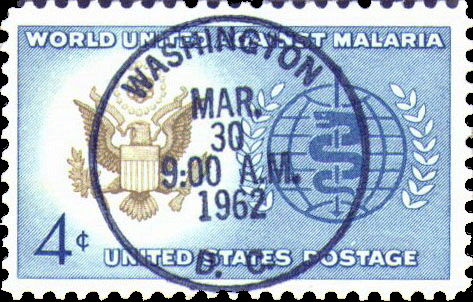
Bureau Issue
A US stamp produced by the Bureau of Engraving and Printing.
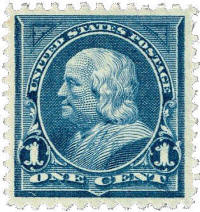
Bureau Issues Association (BIA)
Originally the "Philatelic Plate Number Association" and now known as the United States Stamp Society.
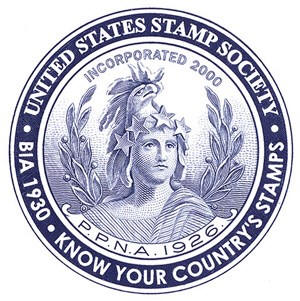
Bureau of Engraving and Printing
The division of the U.S. Treasury Department that took over the printing of U.S. postage stamps in 1894 and continues to print stamps to this day. Located in Washington, D.C., the Bureau printed nearly all U.S. stamps until the 1960s, but since 1967 has shared the printing duties with a variety of other companies.

Bureau Precancel
A US precancel applied by the BEP in Washington D.C., as opposed to a precancel applied in the town for which the precancel applied.

Bureau Specialist
A monthly magazine originally published in 1930 by the BIA, dealing with all aspects of stamps issued by the Bureau of Engraving and Printing, but with a special emphasis on plate numbers and plate varieties. In 1966 the name was changed to "The United States Specialist" to reflect a broader scope.

Burelage
A design of fine, intricate lines printed on the face of security paper meant to either discourage counterfeiting or to prevent the cleaning and reuse of a stamp. The burelage on some stamps is part of the stamp design.
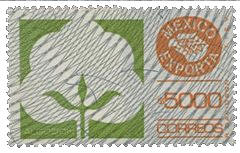
Burnishing
An engraving term, it refers to the process of removing unwanted entries from an engraved printing plate. It is the diametrical opposite of hand tooling, which includes re-cutting, re-engraving and retouching.
